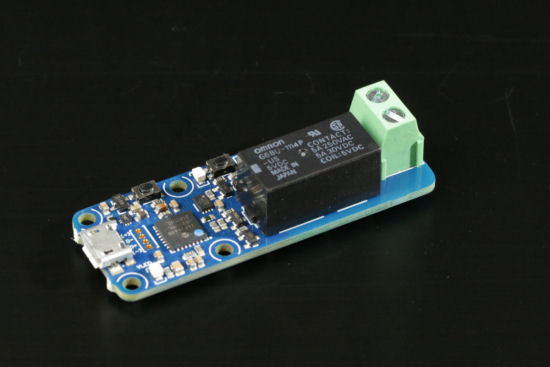![]() This week, we present the Yocto-LatchingRelay. Officially, it's a new product. Unofficially, it replaces the Yocto-LatchedRelay, which we wanted to get rid of for a long time.
This week, we present the Yocto-LatchingRelay. Officially, it's a new product. Unofficially, it replaces the Yocto-LatchedRelay, which we wanted to get rid of for a long time.
The Yocto-LatchingRelay takes the form of a 54x20mm board and is based on an OMRON G6BU-1114P electromagnetic relay. This relay can switch up to 5A and works with voltages up to 250VAC. Note, however, that there is a large DC derating (Max 5A 20VDC). It is officially compatible with inductive loads (cosφ >= 0.4), which is good news as there are fewer and fewer purely resistive loads in modern electrical devices.

The new Yocto-LatchingRelay
The main feature of this relay is its bistable nature. When a conventional relay is not powered any more, a spring returns its internal contacts to their normal position, whereas a bistable relay maintains its contacts in their current position whether powered or not.
An interesting side-effect of bistable electromagnetic relays is that they only consume power when they switch. Conventional relays, on the other hand, consume a considerable amount of energy to maintain their contacts in one of the two possible positions. Thus, the Yocto-LatchingRelay consumes around 25 mA whatever the state of its output, whereas, for example, the Yocto-PowerRelay-V3 consumes around 25 mA when in position A and 66 mA in position B.
Manual switching

There is an input for manually switching the Yocto-LatchingRelay.
The Yocto-LatchingRelay also features a button and input to switch the relay manually. This system has several interesting applications:
- You can wire several push buttons in parallel to the module's input and make a toggle switch with an arbitrary number of buttons.
- You can use this system to create very simple automatons like the food dispenser we made a few years ago.
Differences with Yocto-LatchedRelay
Although the Yocto-LatchingRelay was designed to be as similar as possible to Yocto-LatchedRelay, there are some significant differences:
- Yocto-LatchedRelay could switch 8A (resistive) whereas Yocto-LatchingRelay is limited to 5 amps (cosφ >= 0.4)
- The Yocto-LatchedRelay could switch 60V, whereas the Yocto-LatchingRelay can go up to 250VAC.
- The Yocto-LatchedRelay was an SPDT relay, whereas the Yocto-LatchingRelay is an SPST relay. We would have liked to keep this feature, but the size constraints of the relay prevented us from doing so.
- The Yocto-LatchingRelay fits seamlessly into a YoctoBox-Long-Thick-Black enclosure, which was not the case with the Yocto-LatchedRelay.
Conclusion
We didn't sell many Yocto-LatchedRelay, perhaps because of that lamentable mistake in the product name, but we were reluctant to see it simply disappear from our products range. Hence this replacement product, which we hope will bring you as much satisfaction as the other Yoctopuce products.


